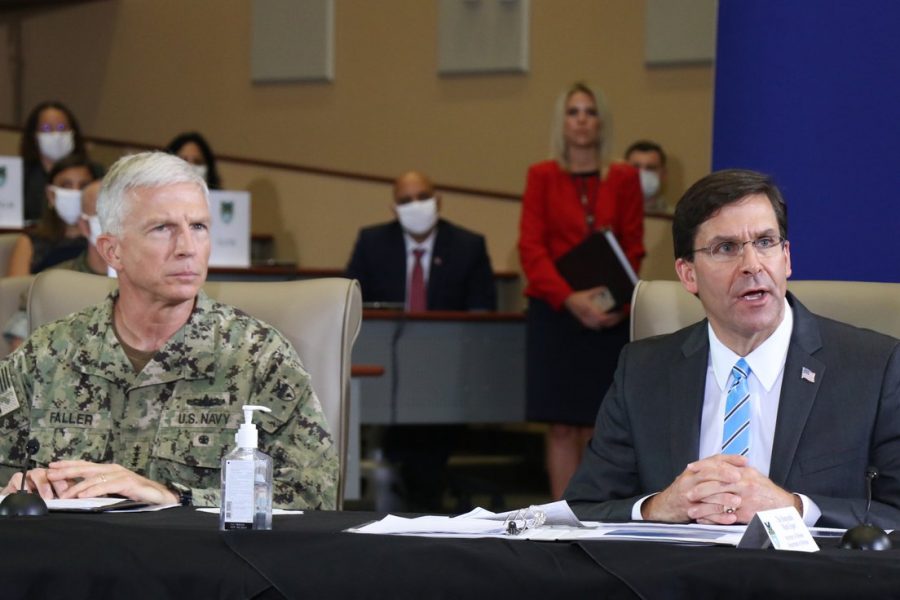U.S. Southern Command has seized more than 122 tons of cocaine since April as America uses more surveillance aircraft to crack down on regional counternarcotics operations, Defense Secretary Mark T. Esper said July 10.
The federal government has deployed 75 percent more intelligence-collection and target-tracking planes, like the Air Force E-3 AWACS, E-8C Joint STARS, and MC-12 Liberty, to SOUTHCOM in the past three months than it has in typical drug interdiction missions. They are accompanied by 65 percent more Navy and Coast Guard ships than normally participate in drug busts, Esper said during a visit to SOUTHCOM headquarters in Florida with President Donald J. Trump.
“In just 12 weeks, SOUTHCOM’s surge operation, conducted with key regional partners, has resulted in more than 1,000 arrests,” Trump said.
In addition to cocaine, Esper noted drug busts have uncovered more than 18,000 pounds of marijuana.
In mid-June, the Air Force deployed two E-3s, an E-8, and a KC-135 tanker to Curacao to “fly detection and monitoring missions in international airspace to help U.S. and international law enforcement authorities,” according to a June 19 SOUTHCOM release. The deployment includes about 200 Airmen.
As of July 10, a dozen Navy and Coast Guard ships were operating in the region, along with 15 American aircraft from U.S. Customs and Border Protection, the Air Force, and the Air National Guard, Esper said.
SOUTHCOM boss Adm. Craig S. Faller said adding more aircraft in the region has led to 15 percent more drug trafficking “disruptions,” but did not specify what time period that is compared to.
“Sixty percent more targeting is a big deal for us because that means we can put more assets on more targets,” Faller said. “We’ve gotten information from our intelligence agencies that says the enemy has watched that and they’re waiting, and they’re stockpiling and they’re trying to change their tactics.”
Surveillance aircraft and ships have brought in drug hauls worth about $2 billion so far.
